Introduction
[specs-box]
Houdini is a procedural 3D application developed by Toronto-based Side Effects Software. Currently in its 14th iteration, the first version was released back in 1996 (though its roots can be traced back to Prisms, a software developed in the 1980s).
I have been using Houdini since version 8 and to be honest I have
always been extremely impressed with what the software is capable of.
Coming from a 3DS Max background, with almost 14 years of experience with
the software, working on something like Houdini was a revelation of
sorts. The procedural node-based approach allowed for a kind of
flexibility that I had never experienced before. Even though at times
this approach can be extremely technical and a little dense the end
results always justified the efforts.
Now, around version 8, the Houdini interface was not the most user-friendly
but since then Side Effects Software has made a major effort towards
making the software more approachable. This started with the release of
Houdini 9, which introduced, among other things, a brand new interface,
material system and the physically-based renderer. A major internal
re-write was carried out in Version 12 making the entire software a lot
more memory efficient and multi-threaded. Along with that there has
also been a continuous effort in improving the interface and viewport performance.
Version 14 once again makes major improvements on that front. The viewport,
selection process and general user experience has received a huge
upgrade with this version. Along with that, improvements have been made
to the animation editor along with the introduction of the Animation
layers panel. There is a brand new crowd simulation system and Position-Based Dynamics which allow for simulating sand, snow and various soft body effects. UV mapping has been improved and also the hair tools have
been updated.
Let’s start with the biggest improvement in this version, the user experience.
User Experience
The Houdini viewport and selection has always been finicky. This always
made poly modeling tasks in Houdini a little irritating. Selecting
polygons and vertices was always a bit of a hit and miss. With this
version it seems that Side Effects finally listened to the users.
Special attention has been put towards improving viewport interaction
and selection. When you open Houdini 14, you are now greeted with a new
gradient based viewport. This can be switched back to the default grey,
if that is your preference. There is also an on-screen help for various
functions.
A brand new point, polygon and edge loop and ring selection methods have
been added and are much faster than anything available before. The
viewport-based help provides the user with the shortcuts required to
make the selections. The general method is to press the “A” key and use
the mouse to make a loop or a ring selection.
There is also a new HUD that allows you to select elements based on Groups, UV connectivity or 3D connectivity.
There are new handles for box, sphere and grid objects. I hope more such
handles are added to other tools in future releases as they make the
modeling process more fluid. Also with every node that gets added
viewport sliders show up with the relevant parameters.
The Move gizmo has been updated allowing the user to move the object in two
axis at the same time, this was something that I have always missed
since I shifted from 3DS Max. Also you can use the middle mouse button
to indirectly drag the object.
Major improvements have been made to the UV Mapping and Unwrapping workflow.
There are brand new UV flatten, Pelting and layout tools along with the
ability to visualize UV Distortion.
A new and improved color picker has been added that has the ability to
show color based on temperature. This is very helpful when setting
colors for lights, since I prefer to set light colors based on
temperature. You can also display a secondary color palette based on
the current color selection.
Along with all this, viewport playback speed has also been improved
tremendously. In a crowd scene that I tested with over 2000 agents the
viewport showed no lag at all.
There
have also been minor and major tweaks to the parameter interfaces of
various nodes, most notably the Mantra render node which has been
restructured in a more logical fashion.
There
is also a new Digital Assets menu that makes for easier editing and
loading of Digital Assets into Houdini. Also the native format for
digital assets has been changed from .otl to .hda.
Overall a lot of thought has been put into making the workflow and user
interaction more fluid and streamlined and even though things can be
improved further, it is a very big step in the right direction.


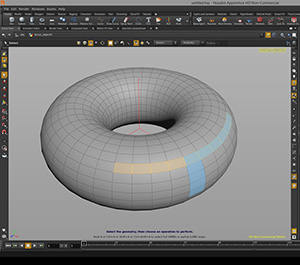
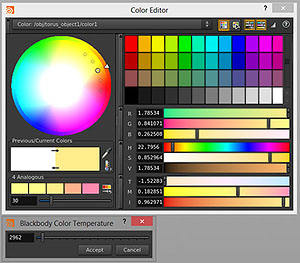
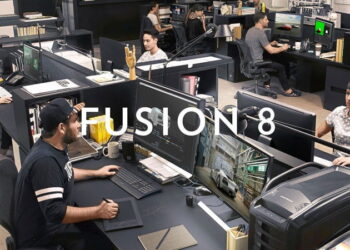
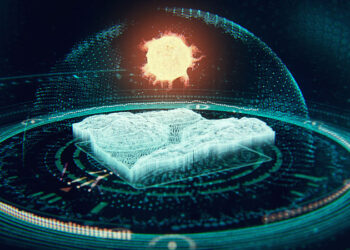
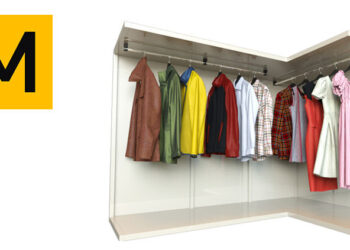

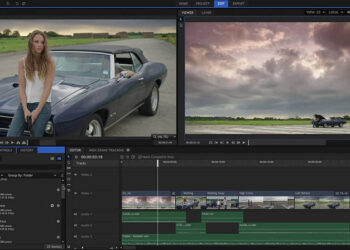





My favorite thing by far is the VDB morph SDF node! Having something off the shelf that can do that is something I have wanted for years! I have asked so many in academics and inquired other places. Finally! Houdini, I love you guys!
Very good and well written review.
I’ve been using 3dsmax for 16 years, so I can feel the same things he’s writing about that’s annoying when coming from 3dsmax.
Houdini has come a long way the last couple of years, and is only getting better and better.
Great review, thanks for taking the time.
It sounds like they’re doing right everything that Max has been doing wrong… viewport/workflow AND hot new features and capabilities.
If I have to go through yet another Max release that is just three viewport tweaks, two bug fixes, and a new spline, I’m gonna lose it.
I like the list of “Cons”.
I think those cons sometimes lead to an unexpected pro.
“Makes the user feel like a rocket scientist at times.” 🙂
if there was some kind of CAT toolkit in houdini, i would dump max in a second
Wait for the H15 Release there are some updates:
https://vimeo.com/135607909
Take your time for learn some basic of houdini and then you see if you like it or not.